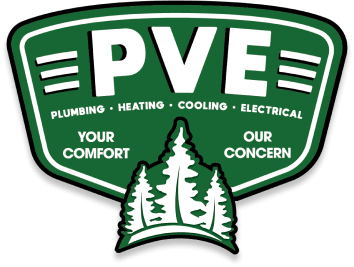The AC kicks on, and you expect relief, but the room stays warm and sticky. If you’ve walked past your vents wondering why the air feels more like a whisper than a chill, you’re not imagining things. Cooling problems can start small but get worse fast, especially in summer.
Common Culprits Behind Poor AC Cooling
When your air conditioner runs but your home stays warm, there’s usually something small causing big discomfort. One frequent issue pops up in the air handler or outdoor unit. If you haven’t checked the filters lately, debris might be trapping airflow. Filters clog slowly until they block cold air from circulating. The system runs nonstop but never gets the job done.
You might notice that the vent nearest the window blows better than the ones deeper in the house; that’s a sign the airflow isn’t balanced. Another potential blocker appears when grass clippings or leaves settle around the outdoor coils. That outdoor coil is where heat gets pushed away from your home. If it becomes covered, it can’t release heat effectively. The result stays the same: your house heats up while the unit keeps churning air. A technician often clears those coils and guides airflow straight where it needs to go.
Low Refrigerant Levels Can Sneak Past You
Refrigerant is the fluid that carries heat from inside your home out into the yard. If the level dips too low, the system doesn’t cool properly. Low refrigerant often means a hidden leak. That leak might sit in a copper line behind a wall or near that outdoor unit where the sun cooks the coils every afternoon. Leaks may go unnoticed because there’s no visible oil or dripping.
What you do notice is the AC running, producing air that feels cool at first, but then turns lukewarm. Or the outside coil could get frosty. When that happens, the system locks into a loop of short cycles that don’t fix the issue. Once an AC repair technician traces and fixes any leaks and refills the refrigerant, the AC can bring temperatures back down.
Clogged Condensate Drains Can Shut Things Down
An air conditioner doesn’t only cool your home, but it also removes excess humidity. That moisture collects in a condensate pan and drains through a small pipe. But over time, algae, dust, or mold can clog the drain line and cause the pan to overflow. Most systems include a float switch that automatically shuts off the AC to prevent water damage. If the water remains trapped, the system may stop cooling, though some units will keep running the fan to help reduce odors.
Unfortunately, blowing warm, humid air can feel even worse than having no airflow at all. You might notice water pooling near the indoor unit or catch a damp, musty smell. Clearing the clogged drain line restores proper function and brings your system back into balance.
Aging Fans Can Lose Their Grip
Fans push air across the indoor evaporator coil and through your vents. Outside, another fan pushes outdoor heat away from the condenser. When those fans start to slow or hum with fatigue, the system doesn’t move the right amount of air. Your home doesn’t get enough cool air even though the motor stays on.
You’ll pick up on odd noises or low airflow at multiple vents. An outdoors fan hissing or clunking in the background is another warning. In some cases you only need a tune-up, tightening screws and loose belts. Other times, a worn motor must be replaced. Either way, once the fan spins properly again, your cooling returns to normal.
Dirty Evaporator Coils Stall the Cold Cycle
Inside your home, cooling happens when warm air runs across the refrigerant-filled evaporator coil. That coil removes heat, and your air feels cool as it moves back into the room. If that coil gets coated in dust or pet hair, it acts like a blanket over the metal. The refrigerant never touches air fully, so heat exchange slows. That leads to frost buildup on the coil and weak airflow. It becomes a cycle: the system freezes, the fan shuts off, the coil thaws, then the system starts and freezes again. You might notice water dripping onto the floor or a musty smell. Cleaning the indoor coil frees up airflow, stops freezing, and lets your AC reach your temperature setting again.
Thermostat Errors Can Throw Everything Off
If the wiring for your thermostat wears out or wires get loose, the unit may tell your system to run constantly or not run at all. Or it might read the wrong temperature. You go to set it cooler, but nothing changes. A placement problem can cause trouble, too. If a thermostat sits near a sunlit window, it may read the home as warmer than it is, causing the unit to stay on longer.
Check that the faceplate sits tight and trim any stray wiring. Try a simple battery swap. If the issues continue, your thermostat might need recalibration or replacement.
Undersized Ducts Can Starve Your System
Ductwork with a small trunk or too many tight turns slows airflow dramatically. You feel uneven temperatures from room to room or pressure pockets while the AC runs. That situation also strains the system because the blower struggles to push air, which can overheat circuits or burn out motors. You might hear whistling near vents or the unit sounding louder than normal. Technicians often add trunk lines, reroute ducts, or give the system a wider breathing pathway.
Home Changes Can Throw Your Unit Off Balance
Maybe you added a new window, enclosed a porch, converted your garage, or extended a wall. These changes affect the size of the space your AC must cool. The system you installed when your house was smaller might not work effectively today. If your system runs constantly, can’t reach the set point, or rooms feel uneven, changed conditions might be the reason.
Running your AC through a load test can tell you what size your home now needs. That test counts insulation level, square footage, window area, and sun exposure. You may find comfort comes back with a unit swap, zoning, or supplemental cooling rather than just trying to rely on HVAC maintenance to revive an aging, ineffective system.
Outdoor Conditions Can Slow the Cooling Process
Your AC pushes hot air out, and if the outdoors is too hot or too humid, that can saddle your system. Running travel lines through a shed or near a water feature raises the ambient temperature around the unit. Backed-up leaves or plant growth around the condenser prevent air from moving away. That keeps heat trapped instead of venting into the yard.
Overheating makes your AC cycle harder and raises your bill. A few feet of space around the unit, trimmed plants, and clean fins let it breathe again. It feels small, but that extra clearance can mean the difference between blistering air and relaxed comfort in your home.
Incorrect Refrigerant Charge Can Freeze or Overheat
This issue ties into low refrigerant, but it stands apart. A charge that’s too high smothers the evaporator. One that’s too low starves it. When water freezes on the coils or you feel no breeze at all, your refrigerant could be mismanaged.
Technicians measure temperatures and pressures to set the right level. It has to match the manufacturer’s specs. If it doesn’t, the AC loses efficiency and either starts to ice up or overheats. Both cause the system to shut down for safety. Fixing the charge brings your cooling back into balance and keeps your home at the temperature you expect.
Bring the Cool Air Back to Your Home Now
When your air conditioner stops doing its job, it’s easy to feel like you’re stuck sweating it out. But small signs usually show up before big breakdowns. A little attention now can save you from a costly mid-season repair. We provide expert cooling services to clients in Belchertown and the surrounding areas, and we offer ductless mini-split installations, thermostat upgrades, and indoor air quality solutions.
If your AC isn’t keeping up, call Pioneer Valley Environmental and let us restore your comfort.









